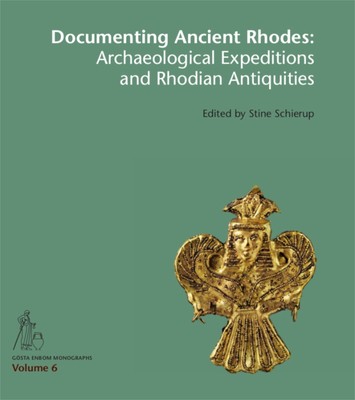
- We will send in 10–14 business days.
- Publisher: Aarhus University Press
- ISBN-10: 8771249877
- ISBN-13: 9788771249873
- Format: 0 x 0 x 0 cm, kieti viršeliai
- Language: English
- SAVE -10% with code: EXTRA
Documenting Ancient Rhodes (e-book) (used book) | bookbook.eu
Reviews
Description
The island of Rhodes in the south-eastern Aegean is in a strategic position for sea-routes between west and east. Its four ancient city-states, Lindos, Kamiros, Ialysos, and from the end of the fifth century BC the new capital of Rhodes, have all provided significant evidence for the political and cultural importance of the island throughout Antiquity. The islands rich historical past has attracted the interest of travelers, archaeologists and scholars over the centuries. Their travelogues, letters, diaries and drawings contains a plethora of information, and constitute an essential and valuable source for the ongoing research in ancient Rhodes. The papers included in this volume throw new light on the early exploration history of Rhodes. From the earliest documented discoveries to the more systematic work done by British, French, Danish and Italian archaeologists. What are the sources for these early activities and how do they contribute to and challenge our understanding of the ancient sites and the archaeological material they yielded? How may archaeological finds that came to European museums in this period be re-contextualised and, through new analytical methods, continue to enrich our understanding of ancient Rhodes? And, finally, what are the challenges for more recent excavation and restoration work carried out at the sites that were first excavated in this formative period of archaeological research? These and many more questions will be addressed in this book by a number of leading scholars within the field.
EXTRA 10 % discount with code: EXTRA
The promotion ends in 22d.11:04:23
The discount code is valid when purchasing from 10 €. Discounts do not stack.
- Publisher: Aarhus University Press
- ISBN-10: 8771249877
- ISBN-13: 9788771249873
- Format: 0 x 0 x 0 cm, kieti viršeliai
- Language: English English
The island of Rhodes in the south-eastern Aegean is in a strategic position for sea-routes between west and east. Its four ancient city-states, Lindos, Kamiros, Ialysos, and from the end of the fifth century BC the new capital of Rhodes, have all provided significant evidence for the political and cultural importance of the island throughout Antiquity. The islands rich historical past has attracted the interest of travelers, archaeologists and scholars over the centuries. Their travelogues, letters, diaries and drawings contains a plethora of information, and constitute an essential and valuable source for the ongoing research in ancient Rhodes. The papers included in this volume throw new light on the early exploration history of Rhodes. From the earliest documented discoveries to the more systematic work done by British, French, Danish and Italian archaeologists. What are the sources for these early activities and how do they contribute to and challenge our understanding of the ancient sites and the archaeological material they yielded? How may archaeological finds that came to European museums in this period be re-contextualised and, through new analytical methods, continue to enrich our understanding of ancient Rhodes? And, finally, what are the challenges for more recent excavation and restoration work carried out at the sites that were first excavated in this formative period of archaeological research? These and many more questions will be addressed in this book by a number of leading scholars within the field.


Reviews